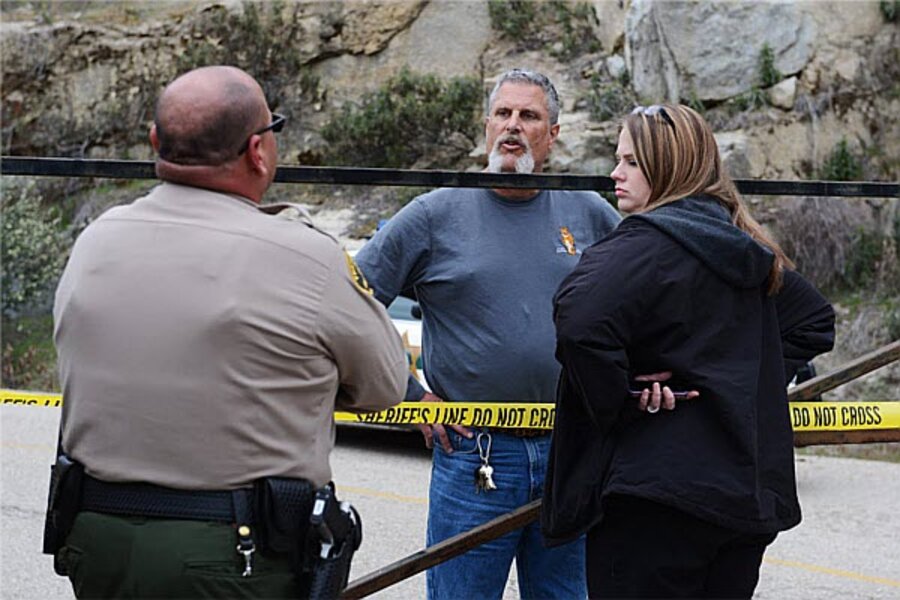Lion mauling death: How dangerous are private zoos?
Loading...
| Los Angeles
The mauling death of a 24-year-old intern at a private zoo in central California Wednesday has renewed calls for better regulation of exotic animals in the US.
A five-year-old male African lion named CousCous – who had once appeared as a cub on the TV show “Ellen” – attacked and killed the volunteer, Dianna Hanson, who was alone in the cage with the big cat.
In announcing Ms. Hanson’s death, park owner Dale Anderson gave no details as to why she had entered the enclosure by herself. But animal behavior experts say this was an unfortunately predictable tragedy, and conservationists are calling this further evidence of the need for better oversight.
“There is a growing epidemic of people who want to keep these exotic animals as pets, or who put them in roadside zoos and pseudo sanctuaries that profit off their captivity,” says Tracy Coppola, program director for the Washington-based International Fund for Animal Welfare (IFAW). She points out that 18 of the 22 deaths in the United States involving wild animals in captivity since 1990 occurred in private zoos and unregulated menageries.
“This is a huge and growing problem in this country,” she says, “more than any other nation. People here are fascinated by these animals and want to own and breed and profit from them.”
However, points out Ms. Coppola, while the lack of national regulation of the exotic animal trade continues to lead to such tragedies, the impact is growing on what are increasingly endangered species.
She notes that some 5,000 tigers are kept in captivity in the state of Texas alone, while roughly 3,000 remain in the wild globally.
Cat Haven, the central California wildlife park where Wednesday’s death occurred, is regulated by both the USDA and the State Fish and Wildlife Service. The facility had passed a USDA inspection as recently as last month. However Cat Haven falls short of qualifying under international standards as a true sanctuary, which neither breed nor exhibit animals, says Monica Engebretson of Born Free USA.
According to Ms. Engebretson, trade in exotic animals continues to expand in the many unregulated and under-reported roadside menageries, private zoos, and what she calls “pseudo” sanctuaries.
California has some of the strictest state laws governing care for wild animals, she notes, but it is one of only 21 states with meaningful regulations. Six states have none at all, she points out.
“It’s always difficult to give admonishments at a time like this,” she says, but adds that at minimum, stricter protocols governing behavior around animals might have prevented a tragedy.
“Cats are predators,” adds Zara McDonald, executive director of the Bay Area Felidae Conservation Fund, “and I don’t care how tame anyone thinks one might be, they are always a wild animal with the ability to hurt humans.”
IFAW is calling on Congress to pass the Big Cats and Public Safety Protection Act, proposed legislation introduced this past fall that IFAW says will be reintroduced next month with bipartisan support.
The bill would prohibit the private possession and breeding of tigers, lions, cougars, leopards, snow leopards, clouded leopards, cheetahs, and jaguars, and any hybrids of these species. The bill tackles both animal welfare and public safety because, Coppola notes, law enforcement officials are ill-equipped to handle crises related to the exotic animal industry.
In the 2011 disaster in Zanesville, Ohio, in which the suicidal owner of a private menagerie set free his lions, tigers, bears, monkeys, and others, and law enforcement officials said they had few options other than to hunt down and shoot over 50 rare and endangered animals before they could hurt local residents.
“This is not what they are trained to do,” Coppola says of the law enforcement officers, adding that in an era of dwindling public funds, “they don’t have the resources, either.”
Such legislation is overdue, says Angela Mertig, sociology professor at Middle Tennessee State University in Murfreesboro, Tenn., commenting on the death of the young intern, Hanson.
While her family has been impacted by a tragic loss, her death matters also “because we need to be continually reminded that we cannot act as if we are in perpetual control of the natural world,” Professor Mertig says via e-mail.
This extends beyond our impact on individual animals, she notes.
“It includes how we treat all life on this planet and the planet itself,” she says, adding, that humans have created numerous ecological messes “because we mistakenly believe that we can do whatever we want to this planet and its life forms without repercussions,” she says.





